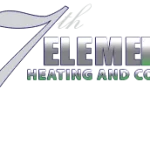Know the Signs: Making a Smart Choice for Your Home’s Comfort and Efficiency
Deciding to replace your heating, ventilation, and air conditioning (HVAC) system is one of the most significant investments you’ll make in your home. It’s more than just a purchase; it’s an upgrade to your family’s daily comfort, health, and financial well-being. For homeowners here in Nampa and the greater Boise area, where we experience hot, dry summers and frigid winters, a reliable and efficient HVAC system isn’t a luxury—it’s essential. If your current system is struggling, you might be debating whether another repair will suffice. This guide will help you identify the key warning signs that point toward replacement, empowering you to make an informed decision for long-term value and peace of mind.
5 Telltale Signs Your HVAC System Needs Replacement
1. The Age of Your System
Even well-maintained HVAC systems have a finite lifespan. Most air conditioners last about 10-15 years, while furnaces typically run for 15-20 years. If your unit is approaching or has surpassed this age range, it’s operating on borrowed time. Newer systems are not only more reliable but are built to meet modern efficiency standards, saving you money from day one.
2. Rising Energy Bills
Are your utility bills creeping up month after month without a change in your usage patterns? As HVAC systems age, they lose efficiency and must work harder to heat or cool your home. This extra effort translates directly into higher energy consumption. A new, high-efficiency system can significantly cut down on these costs, often paying for itself over its lifespan.
3. Frequent and Costly Repairs
An occasional heating repair or AC fix is normal, but if you’re scheduling service calls multiple times a year, it’s a clear red flag. Consider the 50% rule: if the cost of a repair is close to half the value of a new system, replacement is the more financially sound option. Pouring money into an aging unit often leads to a cycle of breakdowns and escalating expenses.
4. Inconsistent Comfort and Airflow
Do you have rooms that are always too hot or too cold? Are you constantly adjusting the thermostat? These are signs that your system can no longer distribute air effectively. This could be due to an improperly sized unit or deteriorating components. Modern solutions, such as an HVAC zone system, can provide customized comfort for every part of your home.
5. Worsening Indoor Air Quality
Older HVAC systems can contribute to poor indoor air quality. If you notice an increase in dust, allergens, or humidity issues, your system may be to blame. An aging system can struggle to filter the air and may even harbor mold or mildew. Upgrading can improve your family’s health, and adding a whole-house humidifier can further enhance your indoor environment.
The Tangible Benefits of a Modern HVAC System
Investing in a new HVAC system delivers more than just reliable temperature control. It brings a host of modern advantages that enhance your home and lifestyle.
- Unmatched Energy Efficiency: Today’s HVAC units, especially ENERGY STAR® certified models, use significantly less energy. With advanced technology and higher SEER2 and HSPF2 ratings, you can see substantial savings on your monthly utility bills.
- Superior Home Comfort: New systems provide consistent, even heating and cooling throughout your home. Innovations like variable-speed motors and smart thermostat compatibility allow for precise temperature management, eliminating hot and cold spots for good.
- Healthier Indoor Air: Modern systems offer advanced air filtration capabilities that capture dust, pollen, pet dander, and other airborne contaminants. This creates a healthier breathing environment for your family, especially for those with allergies or asthma.
- Quiet Operation: Say goodbye to the loud clanking and rattling of an old unit. New HVAC systems are engineered for whisper-quiet operation, preserving the peace and quiet of your home.
- Increased Home Value: A new, high-efficiency HVAC system is a major selling point for potential buyers. It signals a well-maintained home and offers the new owners years of worry-free comfort and lower energy costs.
Did You Know?
Heating and cooling can account for nearly half of the energy used in a typical U.S. home. By upgrading to a high-efficiency HVAC system, you could reduce your energy use for heating and cooling by up to 40%, leading to significant savings and a smaller carbon footprint.
The Right System for Nampa’s Climate
Living in the Treasure Valley means preparing for temperature extremes. Our hot summers demand powerful, efficient air conditioning, while our cold, snowy winters require robust and reliable heating. An outdated or inefficient system will struggle to keep up, driving bills up and comfort levels down. Choosing a system designed for our four-season climate is critical.
At 7th Element Heating and Cooling, we specialize in providing Nampa HVAC services that are tailored to local needs. We understand the specific challenges our climate presents. We might recommend a high-efficiency furnace paired with a central AC or an all-in-one heat pump that provides both heating and cooling. Our goal is to ensure your home is a comfortable sanctuary all year long, no matter what the weather is doing outside.
The HVAC installation process is just as important as the equipment itself. Our certified technicians ensure your new system is sized and installed correctly for optimal performance, efficiency, and longevity. We follow a meticulous process, from the initial home assessment to the final system walkthrough, guaranteeing your complete satisfaction.
Ready to Explore Your HVAC Replacement Options?
Don’t wait for a complete system breakdown. If you’re experiencing any of these signs, it’s time to talk with an expert. The team at 7th Element Heating and Cooling is here to provide an honest assessment and help you find the perfect solution for your home, budget, and comfort needs.
Frequently Asked Questions (FAQ)
What is the average lifespan of an HVAC system in Idaho?
Given our distinct seasons, HVAC systems in Idaho work hard year-round. You can typically expect an air conditioner to last 10-15 years and a gas furnace to last 15-20 years. Regular preventative maintenance, like our HVAC maintenance plans, can help you reach the upper end of that range.
How long does a typical HVAC replacement take?
A standard, straightforward HVAC system replacement can usually be completed in one full day. More complex installations, such as those requiring new ductwork or involving multiple systems, may take longer. Our team will provide a clear timeline during your initial consultation.
What is a heat pump and is it a good choice for Nampa?
A heat pump is an all-in-one system that provides both heating and cooling by moving heat. In the summer, it moves heat out of your home. In the winter, it reverses the process to bring heat in. Modern heat pumps are highly efficient and are an excellent choice for Nampa’s climate, especially dual-fuel systems that pair a heat pump with a furnace for maximum efficiency on the coldest days. Learn more about our heat pump services.
Do you offer financing for new HVAC systems?
Yes, we do. We understand that a new HVAC system is a significant investment. We offer flexible financing options to help make your home comfort upgrade manageable for your budget. You can apply directly on our website.
Glossary of HVAC Terms
SEER2 (Seasonal Energy Efficiency Ratio 2): The standard rating for measuring air conditioner and heat pump cooling efficiency, updated in 2023. A higher SEER2 rating means greater energy efficiency.
HSPF2 (Heating Seasonal Performance Factor 2): The standard rating for measuring the heating efficiency of a heat pump. Like SEER2, a higher HSPF2 rating indicates a more efficient unit.
HVAC Zoning: A method of dividing a home into different zones, each controlled by its own thermostat. Dampers in the ductwork open and close to direct heated or cooled air only to the zones that need it, saving energy and improving comfort.
Heat Pump: A versatile piece of equipment that functions as both an air conditioner and a heater. It works by transferring heat between your house and the outside air.
Ductless Mini-Split: A type of heating and cooling system that doesn’t require ductwork. It consists of an outdoor compressor/condenser and one or more indoor air-handling units, perfect for additions or homes without existing ducts.

